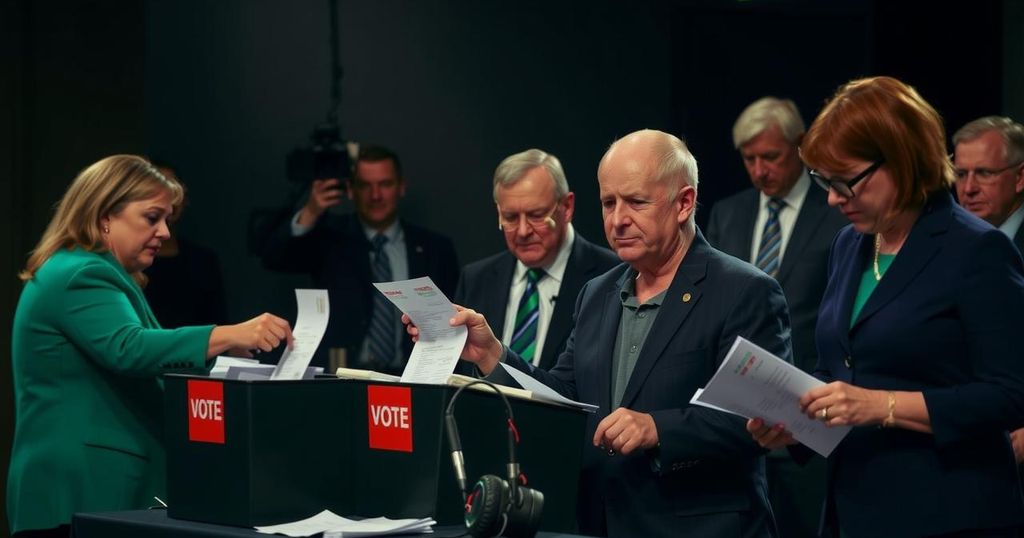The counting for Ireland’s 2024 General Election opened amid a close race among Fine Gael, Fianna Fail, and Sinn Fein, with exit polls indicating varying voter support. As ballot counting continues under a proportional representation system, potential coalition formations are under scrutiny due to pressing socio-economic issues like the housing crisis and immigration. The elections may herald a significant shift in political dynamics in Ireland.
Counting for Ireland’s 2024 General Election commenced on November 29, as ballot boxes were opened at 9 a.m. nationwide. This election features a tight competition among the three leading political parties: Fine Gael, Fianna Fail, and Sinn Fein, according to exit polls. Fine Gael emerged as the preferred choice for 21% of voters, closely followed by Sinn Fein at 21.1% and Fianna Fail at 19.5%. This election marks a critical point for the Irish political landscape, with implications for coalition formations amidst concerns over living costs and housing crises, which dominated the campaign discourse.
As vote tallying progresses, the intricate nature of Ireland’s proportional representation voting system means that final results may take considerable time. The established parties, Fine Gael and Fianna Fail, are primarily focused on forming a coalition government, contingent upon support from smaller parties or independents due to the electoral dynamics resulting in no outright majority. The election will determine whether incumbent parties maintain their longstanding political dominance or whether Sinn Fein, despite facing initial challenges in coalition negotiations due to historical connections with the Irish Republican Army (IRA), can secure a significant role in governance.
Prior to election-day, analysts suggested the likelihood of a Fine Gael-Fianna Fail coalition, yet voter sentiment captured through exit polls indicates a potential shift in political alignment. The ongoing cost of living crisis and immigration were significant factors influencing voter behavior during the campaign. Furthermore, this election may reflect a broader tendency observed globally, where established incumbents face electoral challenges following years of turbulence linked to pandemics and geopolitical instability.
In summary, the outcome of this election will resonate beyond Ireland, potentially influencing political trends in over 50 countries heading to the polls in 2024. The results of this election will not only serve as a referendum on the incumbent coalition government’s record but also as a litmus test for the electorate’s appetite for change in political leadership.
The 2024 General Election in Ireland represents a pivotal moment in the country’s political landscape, occurring as three major parties vie for control amidst a backdrop of pressing social issues. Historically, Fine Gael and Fianna Fail have dominated Irish politics, but the rise of Sinn Fein reflects a changing electorate that desires new leadership potentially reflective of broader societal shifts. Key issues such as the housing crisis and immigration have sparked increased voter engagement and debate, which may significantly influence the election outcome and coalition formations.
As the counting progresses in Ireland’s elections, the initial indications suggest a closely contested race among Fine Gael, Fianna Fail, and Sinn Fein. Given the challenges facing the incumbent parties regarding the high cost of living and a shifting political landscape, the results may lead to a reevaluation of traditional political alliances. The subsequent formation of a government will be pivotal in addressing the pressing issues that prompted a significant voter turnout and engagement during the campaign.
Original Source: apnews.com






